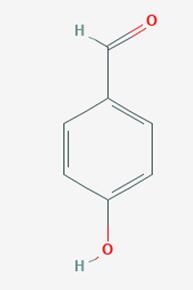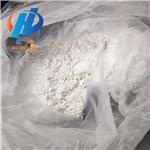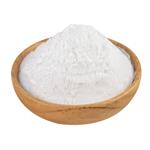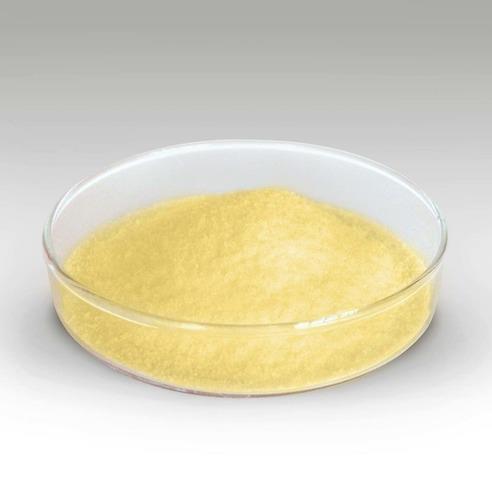p-Hydroxybenzaldehyde-Application
4-Hydroxybenzaldehyde is colorless crystalline powder. Melting point: 115-116 ℃, the relative density is 1.129 (30/4℃). In the air, 4-Hydroxybenzaldehyde is easily to be sublimated. 4-Hydroxybenzaldehyde is easily soluble in alcohol, ether, acetone, and ethyl acetate, slightly soluble in water (at 30.5℃, its water solubility is 1.38g/100ml); it can also be dissolved in benzene (at 65℃, its solubility in benzene is 3.68g/ml). It has aromatic odor.
4-Hydroxybenzaldehyde is one of the three isomers of hydroxybenzaldehyde. It can be found in the orchids Gastrodia elata and Galeola faberi. It is also found in vanilla[1-2].
4-hydroxybenzaldehyde is a hydroxybenzaldehyde that is benzaldehyde substituted with a hydroxy group at position C-4. It has a role as a plant metabolite, a mouse metabolite and an EC 1.14.17.1 (dopamine beta-monooxygenase) inhibitor.
4-Hydroxybenzaldehyde reacts with NAD+ and H2O to produce 4-hydroxybenzoate, NADH, and 2 protons. The reaction is catalyzed by 4-hydroxybenzaldehyde dehydrogenase. 4-Hydroxybenzaldehyde is found in the benzoate degradation via hydroxylation, bisphenol A degradation, toluene and xylene degradation, and biosynthesis of phenylpropanoids pathways.

Fig 1. Chemical structure formula of p-Hydroxybenzaldehyde
There are three kinds of isomers of hydroxybenzaldehyde, namely, o-hydroxybenzaldehyde, m-hydroxybenzaldehyde and p-hydroxybenzaldehyde. p-hydroxybenzaldehyde is also known as phenol formaldehyde. When precipitated from water, it is white to pale yellow needles. It has aromatic odor. At atmospheric pressure, it can be sublimated without decomposition. The molecular weight is 122.12. Melting point: 115~116℃. The relative density is 1.129 (130/4℃). The refractive index is 1.5705 (130℃). It is slightly soluble in water and benzene, easily soluble in alcohol, ether, acetone, and ethyl acetate with water solubility at 30.5℃ being 1.38 and benzene solubility in 65℃ being 3.68. Intraperitoneal injection of mice: LD50: 500mg/kg.
p-Hydroxybenzaldehyde is an important intermediate of pharmaceutical, perfume, liquid crystal. It can generate anisaldehyde when having reaction with dimethyl sulfate, and can generate hydroxy cinnamic aldehyde upon its reaction with acetaldehyde which can further undergo oxidation to obtain cinnamic acid. The direct oxidation of this product can prepare hydroxybenzoic acid; Its reduction can generate p-hydroxyphenyl rmethanol; both of them can be used as spices; pharmaceutical intermediates; raw material of liquid crystal; other kinds of organic synthesis intermediates with a wide range of applications.
In addition to be used as a spice, m-hydroxybenzaldehyde can also be used as the intermediate of producing other kind of species; it can also be used as a kind of pharmaceutical raw materials for production of phenylephrine hydrochloride, epinephrine, and quinine; nickel plating; chemical analysis reagent (sugar quantitative analysis) ; photographic emulsion and fungicides.
O-hydroxybenzaldehyde, also known as salicylaldehyde, is a kind of colorless oily liquid with special odor and bitter almond flavor. It is chemically active and can have various kinds of reactions such as substitution condensation, oxidation, and Wei Tixi (Wittig) reaction. Its reaction with sulfuric acid generates orange color; its reaction with metal ions is to form a colored chelate. Its reaction with ferric chloride solution yields purple color and it can be reduced to salicyl alcohol. It is mainly used as the raw material for the production of perfume "coumarin" and "Dihydrocoumarins"; it can also be used as the raw material for preparation of violet fragrance; it can be also used as fungicides.
p-Hydroxybenzaldehyde Preparation method: take phenol as the raw material, have chloroform reacted with a phenol sodium salt at 60℃; or have condensation reaction between phenol and chloral in the presence of potassium carbonate as the catalyst, and then they further undergo decomposition by sodium methylate; it can also be produced by pouring dry hydrogen chloride into the mixture between phenol and hydrogen cyanide in the presence of aluminum chloride as the catalyst and the decomposition reaction in ice water to obtain the finished p-hydroxybenzaldehyde product.It's the important intermediates of pharmaceutical industry and spices. In foreign , it's also used for synthesis of bromoxynil and chloroxynil which are kind of herbicides, and also used in the manufacture of bactericide, photographic emulsifier, nickel plating luster agent, liquid crystal, etc; In the pharmaceutical field, it can be used for synthesis of amoxicillin, antibacterial synergistic agent named TMP, 3,4,5-Trimethoxybenzaldehyde, Artificial gastrodia elata, farrerol, esmololhydrochloride; In the spicery field, it can be used for synthesis of spicery,for example: vanillin, ethyl vanillin, piperonal, springaldehyde, p-anisaldehyde, raspberry ketone natural,etc.
References
[1] Ha, J. H.; Lee, D. U.; Lee, J. T.; Kim, J. S.; Yong, C. S.; Kim, J. A.; Ha, J. S.; Huh, K. (2000). "4-Hydroxybenzaldehyde from Gastrodia elata B1. Is active in the antioxidation and GABAergic neuromodulation of the rat brain". Journal of Ethnopharmacology. 73 (1–2): 329–333.
[2] Li, Y. M.; Zhou, Z. L.; Hong, Y. F. (1993). "(title in Chinese)" [Studies on the phenolic derivatives from Galeola faberi Rolfe]. Yao xue xue bao = Acta pharmaceutica Sinica (in Chinese). 28 (10): 766–771.
You may like
Related articles And Qustion
See also
Lastest Price from 4-Hydroxybenzaldehyde manufacturers

US $10.00/kg2024-04-24
- CAS:
- 123-08-0
- Min. Order:
- 1kg
- Purity:
- 99.8%
- Supply Ability:
- 10000ton

US $11340.00-11320.00/Tons2024-04-24
- CAS:
- 123-08-0
- Min. Order:
- 10Tons
- Purity:
- 99.99%
- Supply Ability:
- 100Tons



